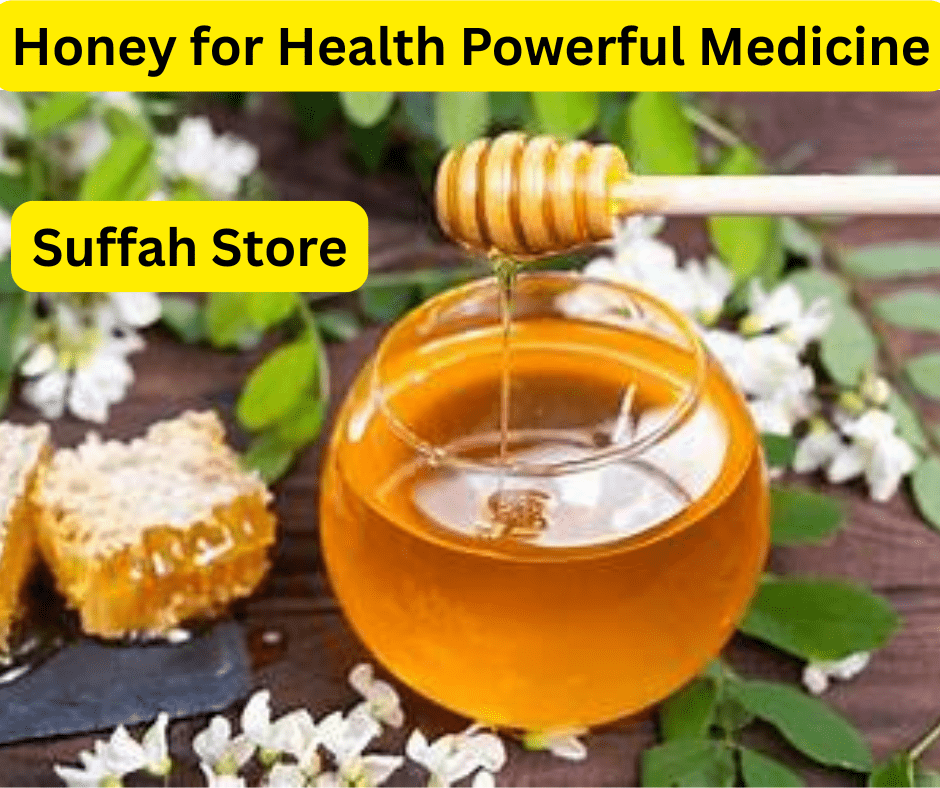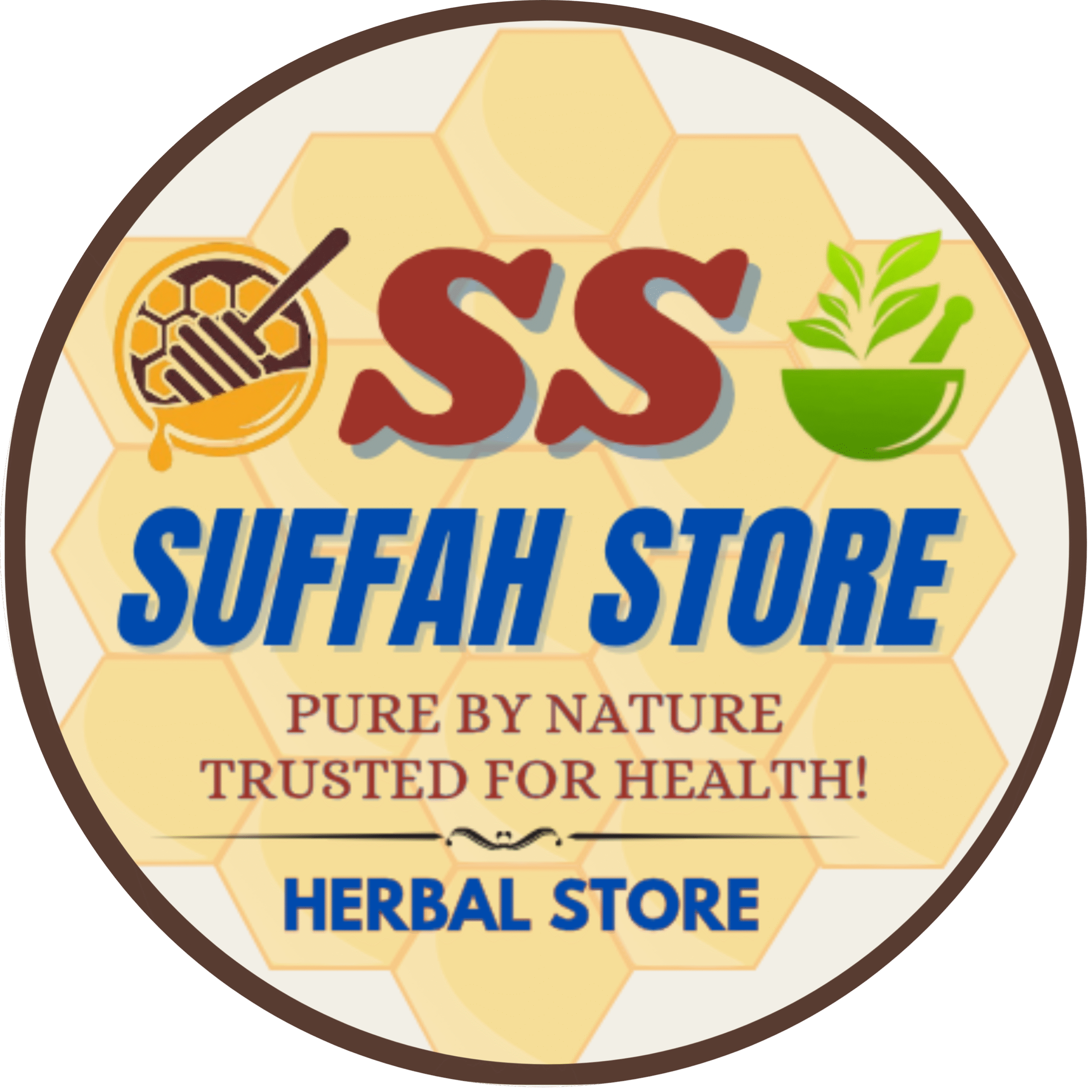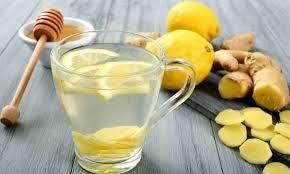
Table of Contents
Honey for Health: Through the Ages
Honey, often referred to as “liquid gold,” has been cherished for millennia not only as a natural sweetener but also as a potent therapeutic agent. Historical records from ancient Egypt, Greece, Rome, and Asia highlight honey’s use in treating wounds, gastrointestinal ailments, respiratory infections, and even as a contraceptive. The reverence for honey is also evident in religious texts such as the Bible and the Qur’an, where it is praised for its healing properties.
Modern science has begun to validate these traditional uses, revealing that honey is a complex substance with a rich profile of bioactive compounds. Its therapeutic potential stems from its unique chemical composition, which includes:
- Sugars: Primarily fructose and glucose, making up 95–99% of its solid content.
- Enzymes: Such as glucose oxidase, catalase, and amylase.
- Organic acids: Including gluconic acid, which contributes to its acidity and antimicrobial properties.
- Minerals: Potassium, magnesium, and iron, with potassium being the most abundant.
- Vitamins: Trace amounts of B-complex vitamins and vitamin C.
- Phenolic compounds: Flavonoids and carotenoids, responsible for its antioxidant activity.
- Aromatic compounds: Over 80 types, contributing to honey’s flavor and therapeutic effects.
The composition of honey varies significantly depending on the floral source, climate, and geography, which in turn influences its medicinal properties. This variability has led to the classification of certain honeys—like Manuka, Tualang, and Gelam—as “medicinal honeys” due to their superior bioactivity.
Honey’s Anti-Inflammatory Arsenal
Inflammation is a biological response to harmful stimuli, such as pathogens, damaged cells, or irritants. While acute inflammation is protective, chronic inflammation is linked to numerous diseases, including arthritis, cardiovascular disease, and cancer. Honey has emerged as a natural anti-inflammatory agent, with several studies supporting its efficacy.
Key Findings:
- Tualang Honey: In a rabbit model of alkaline eye injury, Tualang honey demonstrated anti-inflammatory and antioxidant effects comparable to conventional treatments, suggesting its potential as a natural ophthalmic remedy (Bashkaran et al., 2011).
- Manuka Honey: In rat models with ethanol-induced gastric ulcers, Manuka honey significantly reduced ulceration, preserved gastric mucus, and modulated inflammatory markers such as TNF-α and IL-6 (Almasaudi et al., 2016).
- Gelam Honey: Demonstrated dose-dependent reduction in paw edema in rats, decreased nitric oxide and prostaglandin levels, and suppressed pro-inflammatory cytokines, showing effects similar to the NSAID Indomethacin (Hussein et al., 2012).
Moreover, honey has shown promise in wound healing. In comparative studies, wounds treated with honey healed faster, showed less bacterial contamination, and had better tissue regeneration than those treated with brown sugar or saline (Santos et al., 2012; Mphande et al., 2007).
These findings underscore honey’s potential as a cost-effective, accessible, and natural anti-inflammatory agent, especially valuable in regions with limited access to pharmaceuticals.
Honey as a Natural Antiviral Agent
Viruses are among the most challenging pathogens to treat due to their ability to hijack host cells for replication. Unlike bacteria, viruses cannot be killed without damaging the host cells they inhabit. This makes antiviral drug development complex and often expensive. However, honey has emerged as a promising natural antiviral agent, offering a safer and more accessible alternative, especially in resource-limited settings.
What Makes Honey an Antioxidant?
The antioxidant capacity of honey is primarily attributed to its content of:
- Phenolic compounds: Including flavonoids and phenolic acids.
- Enzymes: Such as catalase and peroxidase.
- Amino acids and proteins: contribute to its radical-scavenging activity.
- Vitamins: Especially vitamin C and trace amounts of B-complex vitamins.
The antioxidant profile of honey varies significantly depending on its floral source and geographical origin. For instance, Tualang honey from Malaysia has been shown to possess higher phenolic content and greater radical-scavenging activity than many commercially available honeys (Kishore et al., 2011).
These findings underscore honey’s potential as a natural antioxidant supplement. Its ability to neutralize free radicals and modulate oxidative pathways makes it a valuable ally in preventing and managing chronic diseases.
Honey’s Nutritional Profile: More Than Just Sugar
While honey is often dismissed as just another sweetener, its nutritional complexity sets it apart from refined sugars. It contains:
- Natural sugars: Mainly fructose and glucose, which are easily digestible and provide quick energy.
- Trace proteins and enzymes: Though not nutritionally significant in quantity, they contribute to honey’s bioactivity.
- Minerals: Including potassium, magnesium, iron, and phosphorus. Darker honeys tend to have higher mineral content.
- Vitamins: Small amounts of B1, B2, B6, C, and K.
- Organic acids: Such as gluconic acid, contribute to its acidity and antimicrobial properties.
This composition makes honey a nutritive sweetener—a source of energy that also delivers health-promoting compounds. Its high fructose content gives it a lower glycemic index than table sugar, and its antioxidant and antimicrobial properties offer additional benefits.
Honey in Wound Healing: A Natural Remedy Rediscovered
One of the most well-documented and historically significant uses of honey is in wound care. Ancient civilizations used honey to treat cuts, burns, ulcers, and abscesses long before the advent of modern antiseptics. Today, scientific research has validated these traditional practices, revealing honey’s multifaceted role in promoting wound healing.
Mechanisms Behind Honey’s Healing Power:
- Antibacterial Action: Honey’s high sugar content, low pH, and hydrogen peroxide production create an environment hostile to microbial growth.
- Anti-inflammatory Effects: It reduces swelling and pain, which are common in infected or inflamed wounds.
- Moist Healing Environment: Honey maintains a moist wound environment, which accelerates tissue regeneration and prevents scab formation.
- Debridement: It helps in autolytic debridement, gently removing dead tissue without harming healthy cells.
- Stimulation of Tissue Growth: Honey promotes angiogenesis (formation of new blood vessels) and fibroblast activity, essential for tissue repair.
Clinical and Experimental Evidence:
- A study demonstrated that honey dressings significantly reduced bacterial contamination and promoted faster healing in human wounds compared to conventional treatments (Mphande et al., 2007).
- Honey has also been used effectively in treating diabetic foot ulcers, a condition notoriously difficult to manage due to poor circulation and high infection risk. Case series have shown that honey not only accelerates healing but also reduces the need for surgical interventions (Mohamed et al., 2015).
These findings support the integration of honey into modern wound care protocols, especially in settings where access to advanced medical supplies is limited. Its affordability, ease of application, and broad-spectrum antimicrobial activity make it a valuable tool in both clinical and home settings.
Honey in Traditional and Complementary Medicine
Honey’s role in traditional medicine spans continents and cultures. In Ayurveda, it is considered a “Yogavahi”—a substance that enhances the properties of other herbs. In Traditional Chinese Medicine, honey is used to harmonize the liver and spleen, relieve pain, and detoxify the body. Islamic medicine also emphasizes honey’s healing power, as mentioned in the Qur’an: “There comes forth from their bellies a drink of varying color wherein is healing for mankind” (Qur’an 16:69).

Modern Applications in Complementary Medicine:
- Ophthalmology: Tualang honey has been tested in the treatment of eye injuries and chronic ocular surface diseases. It showed comparable results to conventional anti-inflammatory eye drops in reducing inflammation and promoting healing (Bashkaran et al., 2011).
- Gastroenterology: Manuka honey has demonstrated protective effects against ethanol-induced gastric ulcers . It preserved gastric mucus, reduced oxidative stress, and modulated inflammatory cytokines, suggesting its potential as a gastroprotective agent (Almasaudi et al., 2016).
- Dermatology: Honey is used in treating acne, eczema, and fungal skin infections. Its antimicrobial and anti-inflammatory properties help reduce lesions and soothe irritated skin.
- Immunomodulation: Some studies suggest that honey can stimulate the immune system by enhancing the production of cytokines and activating immune cells like monocytes and lymphocytes (Tonks et al., 2003).
These applications highlight honey’s versatility as a therapeutic agent. Its integration into complementary and alternative medicine (CAM) practices is growing, supported by a growing body of scientific evidence.
The Need for Standardization and Further Research
Despite the wealth of evidence supporting honey’s medicinal properties, several challenges remain:
- Variability in Composition: The therapeutic efficacy of honey depends heavily on its botanical and geographical origin. Standardizing honey for medical use requires rigorous quality control and chemical profiling.
- Lack of Clinical Trials: While in vitro and animal studies are abundant, large-scale human clinical trials are still limited. More research is needed to establish dosage guidelines, safety profiles, and efficacy across different conditions.
- Regulatory Hurdles: In many countries, honey is still classified solely as a food product, limiting its use in clinical settings. Regulatory frameworks need to evolve to accommodate honey as a therapeutic agent.
Nonetheless, the momentum is building. With increasing interest in natural and integrative therapies, honey is poised to reclaim its place in modern medicine—not just as a sweetener, but as a scientifically validated healing agent.
The Global Diversity of Medicinal Honeys
Not all honey is created equal. The therapeutic potential of honey is deeply influenced by its floral source, geographical origin, and environmental conditions. This diversity gives rise to a wide spectrum of medicinal honeys, each with unique bioactive profiles and health benefits.
Notable Medicinal Honeys Around the World:
- Manuka Honey (New Zealand): Derived from the Leptospermum scoparium plant, Manuka honey is renowned for its high methylglyoxal (MGO) content, which gives it potent antibacterial and antiviral properties. It has been extensively studied for its effectiveness against MRSA, Clostridium difficile, and even influenza viruses.
- Tualang Honey (Malaysia): Harvested from the Tualang tree (Koompassia excelsa), this honey is rich in phenolic compounds and antioxidants. It has demonstrated anti-inflammatory, antimicrobial, and anticancer properties, and is being explored for its role in managing diabetes and oxidative stress.
- Gelam Honey (Malaysia): Sourced from the Melaleuca cajuputi tree, Gelam honey is known for its strong anti-inflammatory and antioxidant effects. It has shown promise in reducing pro-inflammatory cytokines and protecting pancreatic cells under hyperglycemic conditions.
- Jarrah Honey (Australia): With a high total activity rating, Jarrah honey is effective against fungal pathogens like Candida dubliniensis. It also exhibits strong antioxidant properties due to its high phenolic content.
- Ziziphus Honey (Middle East and North Africa): Extracted from the Sidr tree (Ziziphus spina-christi), this honey has been used traditionally for wound healing and gastrointestinal issues. Studies have shown its cytotoxic effects on various cancer cell lines.
This global variety underscores the importance of understanding the source and composition of honey when considering it for therapeutic use. Local honeys may offer unique health benefits tailored to regional flora and environmental conditions.
The Role of Bees in Producing Therapeutic Compounds
Bees are not just honey producers—they are biochemical engineers. The transformation of nectar into honey involves complex enzymatic processes that enhance its medicinal properties.
Key Contributions of Bees:
- Enzymatic Enhancement: Bees add enzymes like glucose oxidase, which converts glucose into gluconic acid and hydrogen peroxide. This reaction is central to honey’s antimicrobial activity.
- Propolis and Royal Jelly: In addition to honey, bees produce other substances like propolis (a resinous mixture with strong antimicrobial properties) and royal jelly (rich in proteins and hormones), both of which contribute to the overall health of the hive and have therapeutic applications.
- Microbial Control: The hive environment is meticulously maintained by bees to prevent microbial contamination. This natural sterility is reflected in the antimicrobial quality of honey.
The health of the bees and the environment they inhabit directly influence the quality of honey. Pesticide exposure, habitat loss, and climate change can all impact the composition and efficacy of honey, making sustainable beekeeping practices essential for preserving its medicinal value.
Environmental Factors and Honey’s Bioactivity
Environmental conditions such as temperature, humidity, soil composition, and seasonal variations significantly affect the nectar composition of flowers, which in turn alters the chemical profile of honey.
The Healing Power of Honey in Prophetic Medicine
Influences on Honey Quality:
- Climate: Warmer climates may increase the concentration of certain sugars and reduce moisture content, enhancing honey’s shelf life and antimicrobial properties.
- Soil Minerals: The mineral content of the soil where nectar-producing plants grow influences the trace elements found in honey. For example, potassium, calcium, and magnesium levels can vary widely.
- Pollution and Pesticides: Contaminants can degrade the quality of honey and pose health risks. Organic and wild honeys are often preferred for medicinal use due to lower exposure to pollutants.
Understanding these environmental influences is crucial for researchers and consumers alike. It also highlights the need for region-specific studies to evaluate the therapeutic potential of local honeys.
Practical Tips for Using Honey Medicinally
If you’re considering incorporating honey into your wellness routine, here are some practical guidelines:
- Choose Unprocessed Honey: Raw honey retains more of its natural enzymes and antioxidants. Avoid overly processed or pasteurized varieties.
- Know Your Source: Opt for monofloral medicinal honeys like Manuka, Tualang, or Gelam for targeted therapeutic use. Local honeys can also offer unique benefits.
- Topical Use: Apply directly to wounds, burns, or skin infections. Use sterile, medical-grade honey when treating open wounds.
- Oral Use: For sore throats, coughs, or digestive issues, take 1–2 teaspoons daily. Mix with warm water, lemon, or herbal teas.
- Storage: Keep honey in a cool, dry place. It doesn’t spoil, but exposure to heat and light can degrade its bioactive compounds.
The Future of Honey in Modern Medicine
As antibiotic resistance rises and interest in natural therapies grows, honey is gaining renewed attention in the medical community. However, for honey to be fully integrated into mainstream healthcare, several steps are needed:
- Standardization: Establishing quality control measures and therapeutic benchmarks for different types of honey.
- Clinical Trials: Conducting large-scale human studies to validate efficacy, safety, and dosage.
- Regulatory Recognition: Reclassifying certain honeys as therapeutic agents rather than just food products.
The potential is vast. Honey could become a cornerstone of integrative medicine, bridging the gap between traditional remedies and modern science.
Final Thoughts
Honey is more than a sweet treat—it’s a complex, bioactive substance with profound health benefits. From ancient apothecaries to modern laboratories, its journey is a testament to nature’s healing power. Whether used to soothe a sore throat, heal a wound, or support overall wellness, honey remains one of the most versatile and valuable gifts from the natural world.
Frequently Asked Questions (FAQs) About the Health Benefits of Honey
1. Is honey healthier than sugar?
Yes, honey is considered a healthier alternative to refined sugar. While both are high in calories and carbohydrates, honey contains antioxidants, enzymes, and trace minerals that sugar lacks. It also has a lower glycemic index, meaning it causes a slower rise in blood sugar levels [1]. However, moderation is key, especially for people with diabetes.
2. Does honey help with coughs and sore throats?
Absolutely. Honey is a well-known remedy for soothing sore throats and suppressing coughs. Its antimicrobial properties help fight infections, while its thick consistency coats the throat, providing relief. The World Health Organization even recommends honey as a natural cough remedy [1].
3. Is honey good for heart health?
Yes, honey may improve heart health by reducing LDL (bad) cholesterol, increasing HDL (good) cholesterol, and lowering triglycerides. Its antioxidant and anti-inflammatory compounds help protect against atherosclerosis and oxidative stress, both of which contribute to cardiovascular disease [2].
4. Can honey be used to treat wounds and burns?
Yes, honey has been used for centuries to treat wounds, burns, and ulcers. It promotes healing by keeping the wound moist, reducing inflammation, and preventing bacterial infections. Medical-grade honeys like Manuka are especially effective in clinical wound care [1].
5. Does honey have anti-cancer properties?
Emerging research suggests that honey may have anticancer effects. It can induce apoptosis (cell death) in cancer cells and inhibit tumor growth. These effects are largely attributed to its antioxidant and phenolic compounds. However, honey should not replace conventional cancer treatments [1].
6. Is honey safe for people with diabetes?
Honey can be consumed in moderation by people with type 2 diabetes, as it may improve insulin sensitivity and reduce oxidative stress. However, it still raises blood sugar levels and should be used cautiously. Always consult a healthcare provider before making dietary changes [1].
7. Can honey boost the immune system?
Yes, honey can enhance immune function by stimulating the production of cytokines and activating immune cells. Its antimicrobial and antioxidant properties help the body fight infections and reduce inflammation [1].
References



